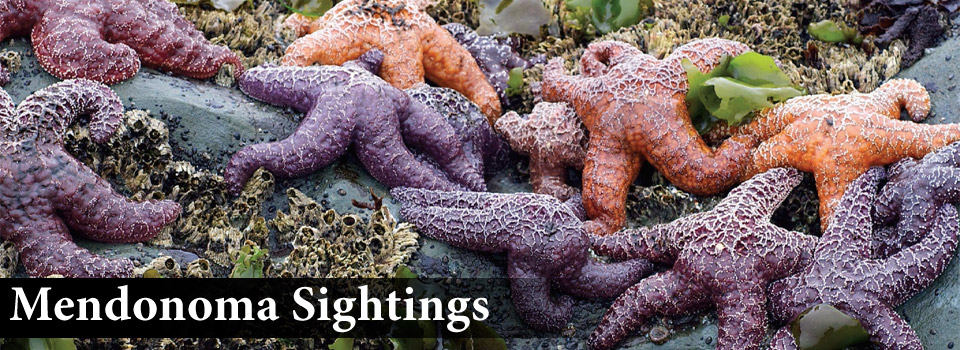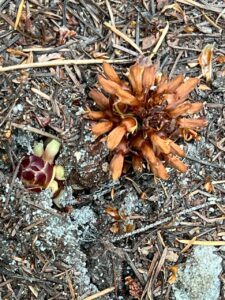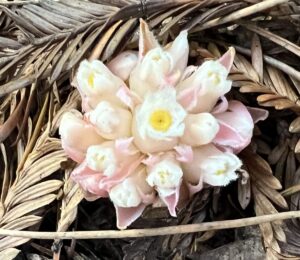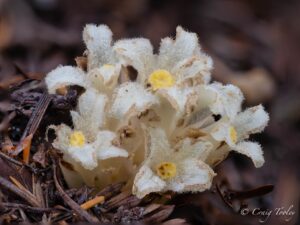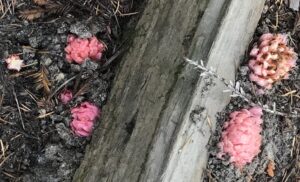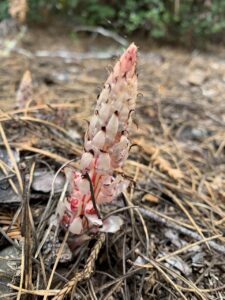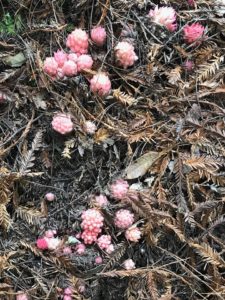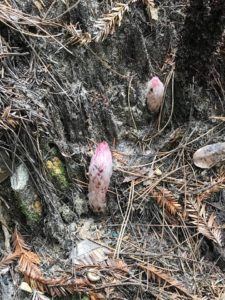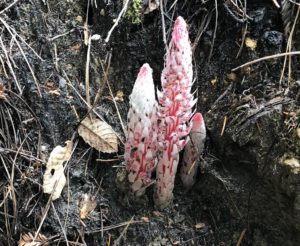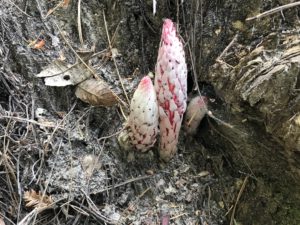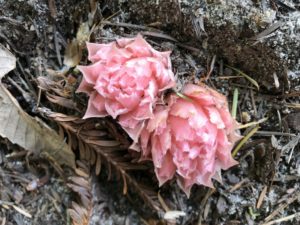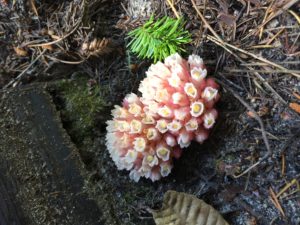There is something going on underground at Rick's and my place and an adjacent neighbor in Anchor Bay. Fungi and plants are weaving their magic for some rare and unusual wildflowers. The rarest of them is the Small Ground Cone, Kopsiopsis hookeri. They are mostly dried up now, but a single one barely pushed to the surface a few weeks ago. They are known to be symbiotic with the plant Salal. The new Small Ground Cone kind of looks like a turtle emerging from the sandy soil.
Nearby there are Gnome Plants, Hemitomes congestum. They come up in different places, but in the same general area. Fungi in the area is Matsutake and Queen Boletes. This photo of a newly emerged plant was taken by Bob Rutemoeller.
And just across from the Gnome Plants, a single California Pine Foot, Pityopus californicus. This photo was taken by Craig Tooley.
I have a couple more to show you, but on another day!
Thanks to Bob and Craig for allowing me to share their photos with you here. I sure wish I had 3-D glasses that would let me look into the ground and see all the connections going on down there!
Drippy fog this morning, enough to show .001 in the rain gauge. The sun is trying to break through this afternoon. The fog has lifted and the Pacific Ocean is still there! Yay!
